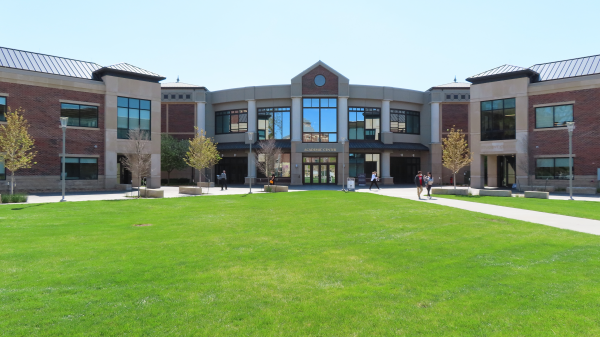Originally published in the May/June 2016 issue of BOMA Magazine — We rely on batteries to power everything from television remotes and cell phones to laptop computers and even cars. And, now, you can add commercial buildings to that list. Energy storage technology is just one of the many alternative energy sources that commercial real estate companies are using to take sustainability and efficiency to the next level. Whether striving to further lower energy costs, comply with state or local regulations to reduce energy consumption or achieve the lofty goal of net zero energy status, building owners and property management companies are turning to carbon-free energy sources, such as solar, wind, geothermal and waste-to-energy, to power their buildings.
Let the Sunshine In
“A lot of things are happening right now that are making alternative energy sources more attractive,” says Bob Best, executive vice president in Energy and Sustainability Services at JLL. First, if you take solar power as an example, the cost of solar panels has dropped steeply as demand has grown. Second, at least in the United States, the federal government offers a 30 percent investment tax credit (ITC) for solar energy use in commercial properties. Finally, depending on which utility services your area, there may be various rebates and pricing incentives for the use of renewable energy. “When you put everything together, depending on where your building is located, you can get solar energy for the same price you would pay for traditional energy through the power grid—or possibly even less,” explains Best.
Why aren’t more companies investing in alternative energy solutions? “A lot of the hesitation comes from unfamiliarity,” says Kyle Goehring, vice president at JLL who leads the Alternative Energy Services team. “Many companies and tenants also are leery of long term contracts, and they would rather not make a decision at all than make the wrong decision.”
Another concern for many building owners is technological obsolescence—that is, the fear of owning solar panels that will become outdated soon after installation. The solution, according to Best, is a power purchase agreement (PPA). With PPAs, solar assets, for example, can be installed on your property’s roof to supply power to your building, but are owned by a third-party solar developer who sells you power generated at a lower cost than energy from the grid. The risk lies with the solar developer, as do any operational or maintenance expenses. The PPA contract, in many cases, can be terminated for cause or transferred to a new owner, which minimizes the risk of a long-term commitment. In addition, some solar developers actually will offer to pay for part or all of a new roof in return for a building owner signing a long-term PPA.
If an on-site PPA is still too much of a commitment, building owners looking to harness alternative energy also have the option to purchase energy from off-site sources, such as solar arrays, wind farms and waste-to-energy facilities. “When you look at big off-site renewable energy options, wind is the lowest- cost solution and it produces the most energy over the year,” says Goehring.
Power Up
Solar and wind certainly are not the only sources of alternative energy being used by commercial properties. Irvine Company recently partnered with energy storage company Advanced Microgrid Solutions (AMS) to create the first-ever fleet of so-called Hybrid Electric Buildings® run with a combination of energy storage technology from Tesla and advanced software. The first step of what will be a more than 20-building initiative happened late last year when 16 two-ton, 100kWh Tesla Powerpack batteries were installed outside 20 Pacifica, an office tower in Irvine, California. These batteries, which use the same technology as the batteries found in Tesla’s electric cars, are charged during non-peak hours by energy from the power grid and deployed during peak daytime hours as a “virtual power plant” that reduces energy pulled from the grid. This not only eases the burden on the utility during peak demand, but, optimized by AMS software that constantly monitors energy use and enables load reduction for individual properties, it creates energy savings for Irvine Company, as it is not charged a premium for using high-cost peak energy provided by the battery systems.
The impetus for this project happened a few years ago, when the San Onofre nuclear power plant in Southern California unexpectedly closed, explains Rich Bluth, Irvine Company’s vice president of Energy Management. Local utility company Southern California Edison (SCE) was faced with the challenge of how to replace energy in areas where the local power grid was most impacted by this closure, primarily Irvine and Newport Beach, and solicited proposals for solutions. AMS not only won a contract to increase the energy supply to the grid with battery storage, but it also won a contract with SCE to offer customer-side energy storage technology to reduce demand on the grid—but they needed to find someone’s demand to reduce. Irvine Company, with much of its portfolio located over a 10-mile swath of the affected area, was identified by AMS as the perfect candidate for this project. “We were in the right place to see this technology be applied to our portfolio,” says Bluth.
Battery storage also solves another emerging problem: the “duck curve,” named for the duck-like shape of the graph charting an evolving pattern of energy demand. “California has so much solar installed now, it’s actually changing when the peak demand for power occurs,” Bluth explains. “Peak demand continues to shift later because, just as the sun starts going down and solar energy generation starts to drop off, you end up with a sudden spike in demand as everyone gets home and turns on their air-conditioning.” Battery storage plays a role in smoothing out the duck curve because it is a resource that can be called upon in an instant to deliver additional energy, backing up the intermittency of renewables like solar and wind.
According to Bluth, the entire battery-powered fleet is intended to be operational by July 1, 2017. Right now, 20 Pacifica is serving as the pilot property to allow AMS to perfect its software algorithms for eventual use across the portfolio, which, in total, will provide SCE with 10 megawatts of reserve power.
Next Steps
So, what’s ahead for the fast-moving field of alternative energy? “The next step is solar plus storage to increase the number of hours solar power can be used, especially as storage has become more economically viable and the deal structures are finally making sense,” says JLL’s Goehring. Bluth agrees: “It’s the Holy Grail: charging batteries during peak hours using solar panels.”
Ever more complex software also will continue to elevate the performance of alternative energy sources, much like how AMS’s software optimizes the operations of the Telsa Powerpacks for Irvine Company. “Running commercial properties is getting more technologically advanced, and we certainly will see building intelligence making alternative energy smarter,” say JLL’s Best. “Soon, buildings will be able to automatically pick and choose the best energy source to use at any given time, both in terms of efficiency and cost.” In short, the future of alternative energy use in commercial real estate will be in even more alternatives.





